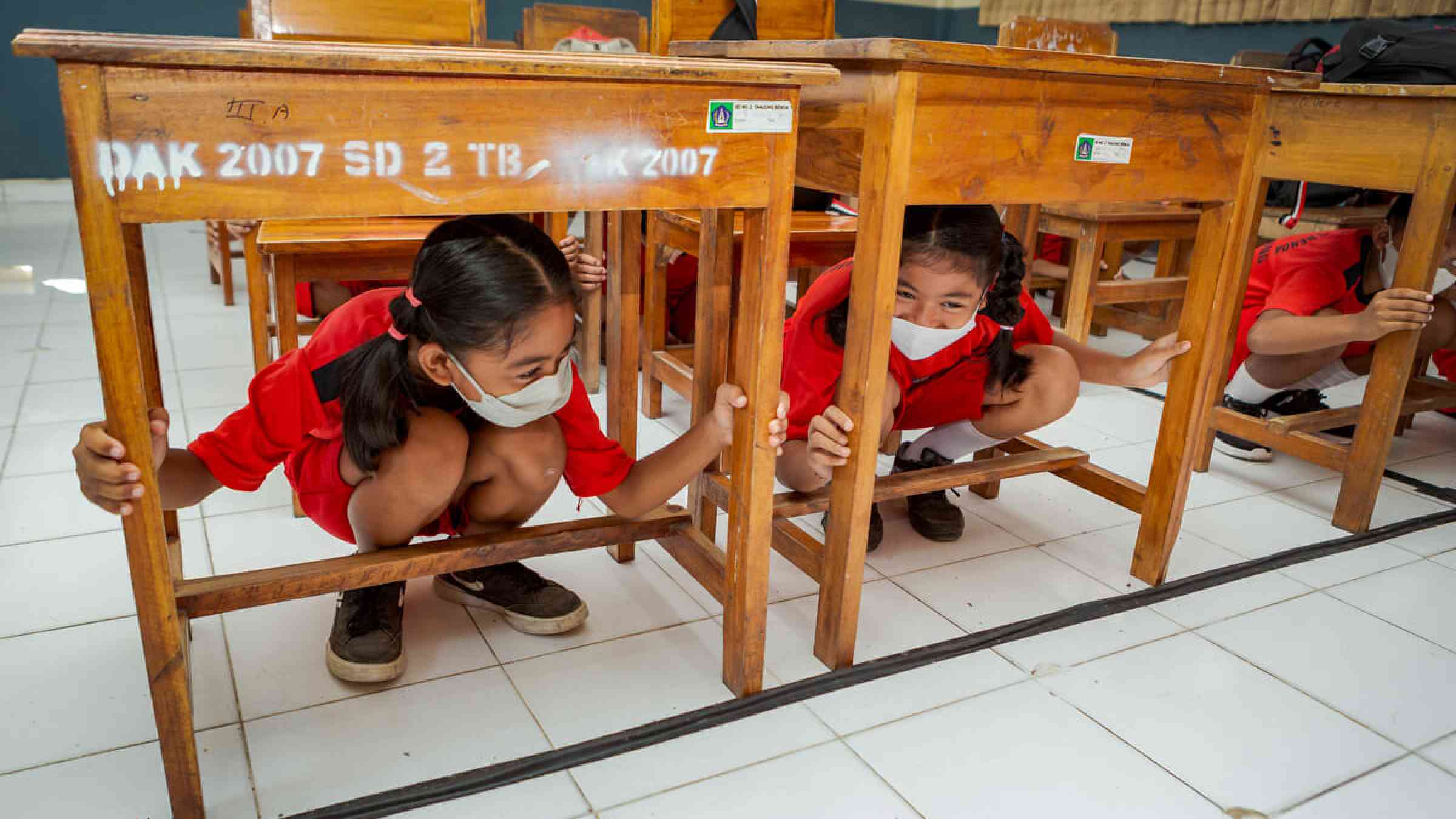Your guide to the High-Level Meeting of the UNGA on the Midterm Review of the Implementation of the Sendai Framework for DRR

Next week, on the 18-19 May, 187 countries are expected to gather in New York to discuss the first half of the implementation of the Sendai Framework for Disaster Risk Reduction (2015- 2030) – the first major agreement of the post-2015 development agenda meant to provide Member States with concrete actions to protect development gains from disaster risks.
Endorsed by the United Nations General Assembly following the 2015 Third UN World Conference on Disaster Risk Reduction (WCDRR), the Sendai Framework for Disaster Risk Reduction (2015-2030) advocates for:
The substantial reduction of disaster risk, and losses in lives, livelihoods and health, and in the economic, physical, social, cultural, and environmental assets of persons, businesses, communities, and countries.
If you’ve never heard of the Sendai Framework, or if you need a refresher, this guide will tell you what to expect from the High-Level Meeting, why GNDR will be there with members from around the globe—and what this all means for you.
1. What is the High-Level Meeting on the Midterm Review of the Sendai Framework?
The High-Level Meeting of the United Nations General Assembly (HLM) serves as a platform for Member States, UN system partners, and other stakeholders to review the findings and recommendations of the Midterm Review of the Sendai Framework for Disaster Risk Reduction in order to amp up and accelerate its implementation.
Status of the targets of Sendai Framework:
| Target | Status |
A. Reduce mortality
| Better – decreased, excluding COVID-19 |
B. Reduce number of affected persons
| Worse – increased by 80% |
C. Reduce direct economic losses
| Worse -loss has risen significantly |
D. Reduce damage to infrastructure & disruption to services
| Worse – estimated to have doubled |
E. Increase countries with national and local DRR strategies
| Better – national strategies increased to 125 countries |
F. Increase international cooperation
| Under-reported |
| G. Increase availability of and access to early warning | Low – half of countries lack early warning systems |
2. Why is the Sendai Framework Mid-Term Review High-Level Meeting important?
The High-Level Meeting provides States and stakeholders with an opportunity to review context shifts and emerging issues since 2015, and identify course corrections and new initiatives that will address systemic risk more effectively, as well as mobilize the necessary action-oriented political ambition to renew commitments and accelerate the implementation of the Sendai Framework.
As one of several midpoint stocktaking and review exercises, the findings and recommendations of the Sendai Framework Mid-Term Review are central to informing actions that support the realisation of numerous global agreements and reviews, including those related to sustainable development, financing for development, climate, biodiversity, water, energy, and food.
3. Why is GNDR at the Mid-Term Review High-Level Meeting?
Disaster risk reduction is everybody’s business. As a network of civil society organisations we believe that everyone must work together to strengthen the resilience of people most at-risk and prevent hazards from becoming disasters.
To reach the Sendai Framework targets by 2030, we need a concise and action-oriented political declaration to renew commitments and accelerate the implementation of the Sendai Framework.
GNDR secretariat staff and members will attend the High-Level Meeting in New York in person to champion our calls-to-action and urge governments to commit to them.
What is GNDR advocating for?
At this midway point in the implementation of the Sendai Framework we want governments to commit to eight actions in their political declaration at the High-Level Meeting:
- Listen to communities at-risk of disasters
- Invest in DRR at the local level
- Strengthen risk-informed development coordination and coherence
- Tackle gender inequality
- Integrate inclusion across all areas of the framework
- Learn from Covid-19
- Strengthen DRR governance in conflict affected states
- Involve youth in DRR
These eight actions were developed in consultation with GNDR member organisations.
We’re calling on member states to work with civil society and take a whole-of-society approach to meaningfully reduce disaster risk and reach the Sendai targets by 2030.
3. What can I do to help achieve the targets of the Sendai Framework for Disaster Reduction?
Coordinated global action is our best hope for preventing and reducing disaster risks posed by both natural and man-made hazards and related environmental, technological, and biological hazards and risks.
This is why GNDR is dedicated to pushing for stronger commitments at the global level and supporting local stakeholders, including civil society organizations, to fulfill those commitments. But we all have a role to play to reduce disaster risk.
Here’s a few things you can do:
- One of the biggest impacts you can make is to vote for people who support risk-informed development and localisation for disaster risk reduction
- An all-of-society approach lies at the heart of effective disaster risk reduction. Help champion the role of civil society in convening multiple stakeholder groups and strengthening collaboration by supporting local civil society organisations, and sharing what resonates
- Learn about and join our sessions on the Sendai Framework Mid-term Review High-Level meeting
- Read about GNDR’s contribution to the Sendai Framework for Disaster Risk Reduction (2015-2030) Mid-Term Review, including our call-to-action and policy analysis below
GNDR’s policy analysis, reflections, and recommendations
4. Live from the #SendaiFramework HLM:
Want the latest news from the Sendai Framework for Disaster Reduction (2015-2030) Mid-term Review? Follow our Linkedin, Facebook and Twitter for updates on what’s happening at the UNGA High-Level Meeting. Here are hashtags to join the conversation: #SendaiFramework #DRRforEveryone